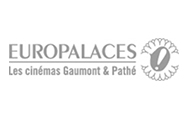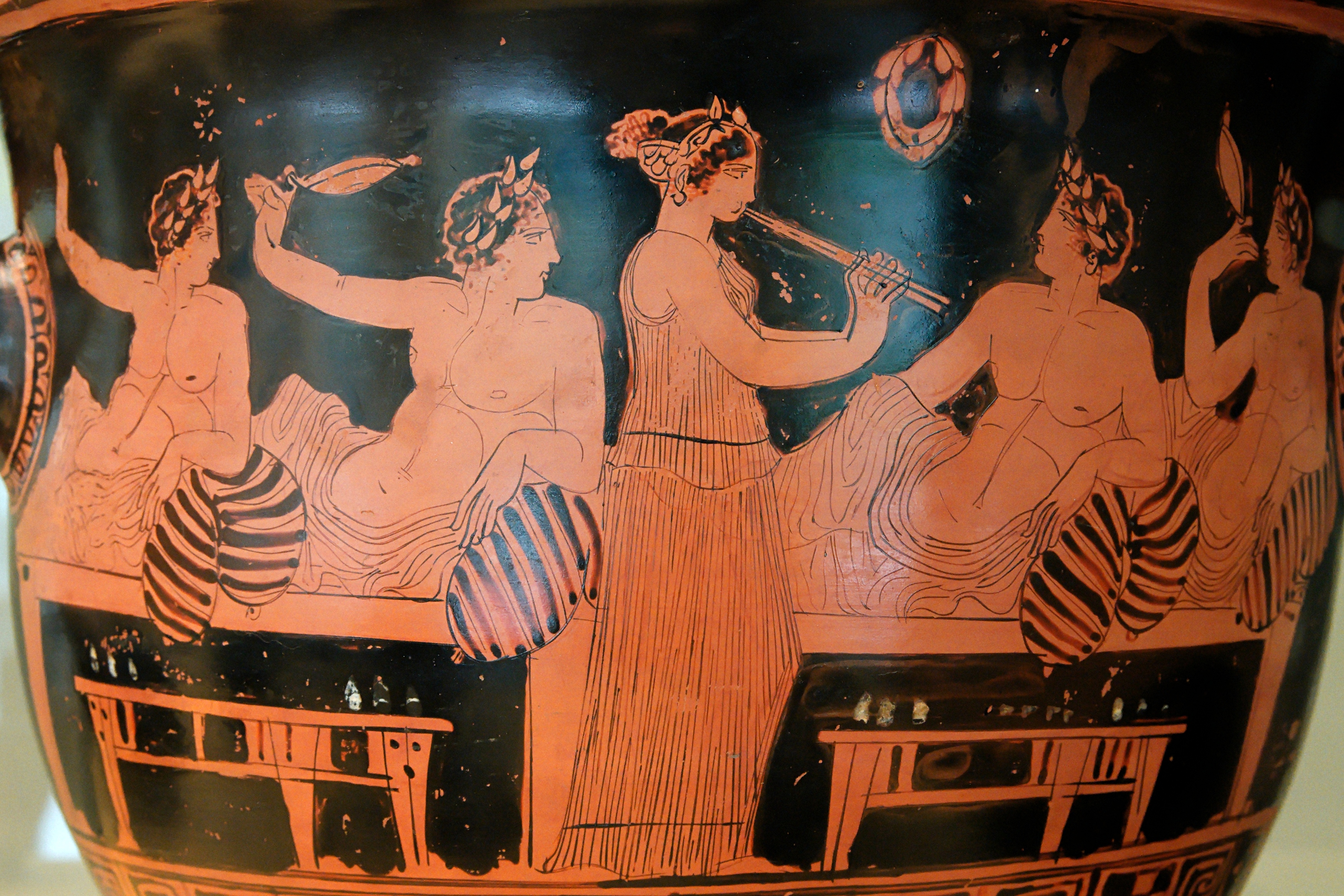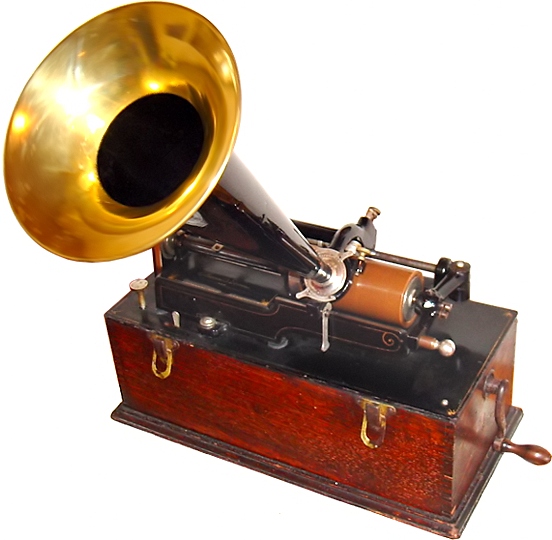|
Pathé
Pathé or Pathé Frères (, styled as PATHÉ!) is the name of various French people, French businesses that were founded and originally run by the Pathé Brothers of France starting in 1896. In the early 1900s, Pathé became the world's largest film equipment and production company, as well as a major producer of phonograph records. In 1908, Pathé invented the newsreel that was shown in cinemas before a feature film. Pathé is a major film production and distribution company, owning a number of cinema chains through its subsidiary Les Cinémas Pathé Gaumont and television networks across Europe. It is the second-oldest operating film company behind Gaumont Film Company, which was established in 1895. History The company was founded as Société Pathé Frères (Pathé Brothers Company) in Paris, France on 28 September 1896, by the four brothers Charles Pathé, Charles, Émile, Théophile and Jacques Pathé. During the first part of the 20th century, Pathé became the large ... [...More Info...] [...Related Items...] OR: [Wikipedia] [Google] [Baidu] |
Les Cinémas Pathé Gaumont
Les Cinémas Pathé Gaumont is a cinema chain owned by Pathé, with operations in France, the Netherlands, Switzerland, Belgium, and Tunisia. The company is market leader in each country, with the exception of Belgium and Tunisia. It is Europe’s second largest cinema chain. History Les Cinémas Pathé Gaumont was formed in 2001 when the French film production and distribution companies Pathé and Gaumont merged their cinema operations, respectively owned by Jérôme Seydoux and Nicolas Seydoux. Gaumont owned 34% and Pathé owned 66% of the shares in the joint venture. During the first years of operation the company was called ''Europalaces'', but it was later changed to Les Cinémas Gaumont Pathé. On 1 March 2017, it was announced that Gaumont sold its 34% stake in Les Cinémas Gaumont Pathé to Pathé for €380 million, Gaumont wanted to focus more on the production and distribution of content. The name of the company changed shortly thereafter to Les Cinémas Pathé Gaumo ... [...More Info...] [...Related Items...] OR: [Wikipedia] [Google] [Baidu] |
Charles Pathé
Charles Morand Pathé (; 26 December 1863 – 25 December 1957) was a pioneer of the French film and recording industries. As the founder of Pathé Frères, its roots lie in 1896 Paris, France, when Pathé and his brothers pioneered the development of the moving image. Pathé adopted the national emblem of France, the cockerel, as the trademark for his company. After the company, now called Compagnie Générale des Éstablissements Pathé Frères Phonographes & Cinématographes, invented the cinema newsreel with ''Pathé-Journal''. Early life The son of a butcher shop owner, Charles Morand Pathé was born at Chevry-Cossigny, in the Seine-et-Marne ''département'' of France. His father, Jacques Pathé and mother, Thérèse-Émélie Kech were butchers by trade, and ran a delicatessen first in Chevry-Cossigny, and later in Vincennes. Charles had three brothers and two sisters. Business ventures Pathé left school at 14 to work as an apprentice butcher, at rue de Charenton, Par ... [...More Info...] [...Related Items...] OR: [Wikipedia] [Google] [Baidu] |
Newsreel
A newsreel is a form of short documentary film, containing news stories and items of topical interest, that was prevalent between the 1910s and the mid 1970s. Typically presented in a cinema, newsreels were a source of current affairs, information, and entertainment for millions of moviegoers. Newsreels were typically exhibited preceding a feature film, but there were also dedicated newsreel theaters in many major cities in the 1930s and ’40s, and some large city cinemas also included a smaller theaterette where newsreels were screened continuously throughout the day. By the end of the 1960s television news broadcasts had supplanted the format. Newsreels are considered significant historical documents, since they are often the only audiovisual record of certain cultural events. History Silent news films were shown in cinemas from the late 19th century. In 1909 Pathé started producing weekly newsreels in Europe. Pathé began producing newsreels for the UK in 1910 and ... [...More Info...] [...Related Items...] OR: [Wikipedia] [Google] [Baidu] |
Gaumont Film Company
The Gaumont Film Company (, ), often shortened to Gaumont, is a French film studio headquartered in Neuilly-sur-Seine, France. Founded by the engineer-turned-inventor Léon Gaumont (1864–1946) in 1895, it is the oldest extant film company in the world, established before other studios such as Pathé (founded in 1896), Titanus (1904), Nordisk Film (1906), Universal, Paramount, and Nikkatsu (founded in 1912). Gaumont predominantly produces, co-produces, and distributes films, and in 2011, 95% of Gaumont's consolidated revenues came from the film division. The company is increasingly becoming a TV series producer with its American subsidiary Gaumont International Television as well as its existing French production features. Gaumont is run by Nicolas Seydoux (President), Sidonie Dumas (General Director), and Christophe Riandee (Deputy General Director). History Originally dealing in photographic apparatus, the company began producing short films in 1897 to promote its make of ... [...More Info...] [...Related Items...] OR: [Wikipedia] [Google] [Baidu] |
Gaumont-Pathe Archives
Gaumont Pathé Archives was set up after the catalogues of Cinémathèque Gaumont and Pathé Archives were combined in 2004. This venture is now the leading French image bank for black and white and colour images illustrating the history of the 20th and 21st centuries. The archive contains nearly 12,000 hours of footage including Pathé, Gaumont, and Eclair newsreels from 1908 to 1979, Sygma archives and the recently acquired Soviet archives from the Arkeion catalog, and numerous documentaries. Gaumont Pathé Archives also conserves and showcases silent movies from the combined catalogues of Gaumont and Pathé which contains over 2,000 titles. These include films by the founding fathers of French cinema, from Leonce Perret and Albert Capellani to Ferdinand Zecca and Louis Feuillade Louis Feuillade (; 19 February 1873 – 25 February 1925) was a French filmmaker of the silent era. Between 1906 and 1924, he directed over 630 films. He is primarily known for the crime serials ... [...More Info...] [...Related Items...] OR: [Wikipedia] [Google] [Baidu] |
American Record Corporation
American Record Corporation (ARC), also referred to as American Record Company, American Recording Corporation, or ARC Records, was an American record company. Overview ARC was created in January 1929 by Louis G. Sylvester, president of Scranton Button Works ('Scranton'), founded 1885. Scranton owned a pressing plant that manufactured disks for many companies, including Columbia labels and Emerson Records, the latter which it also owned. It then purchased Cameo Record Corporation, which owned the Cameo, Lincoln and Romeo labels), and six labels owned by the Plaza Music Company ( Conqueror, Banner, Domino, Jewel, Oriole, and Regal). for $1 each, including liabilities. Pathé-Perfect Phonograph and Radio Corporation, which owned Actuelle, Pathé, and Perfect, was also purchased. 'American Record Corporation' was incorporated in Delaware on July 25, 1929, as a subsidiary of Consolidated Film Industries, Inc. ("CFI"). Louis G. Sylvester became the president of the new compan ... [...More Info...] [...Related Items...] OR: [Wikipedia] [Google] [Baidu] |
Mitchell Mark
Mitchel H. Mark a.k.a. Mitchell Mark a.k.a. Mitchell H. Mark (born as Mitchel Henry Mark) (1868 – March 20, 1918) was a pioneer of motion picture exhibition in the United States. Early life Mitchel Henry Mark was born in 1868 in Richmond Virginia. Early in his life, he moved to Buffalo and began in the wholesale hat trade, keeping a store in Buffalo the rest of his life. It operated nearly two years, the longest run for any such theater at that time: comparable early theaters were temporary and lasted only days or weeks. Mark was the first American to have a distribution arrangement with Pathé Frères to import Pathé films to the United States. Indeed, nearly the entire Vitascope Theatre program of October 19, 1896, consisted of Lumiere films. Expansion Again with his brother, Mitchel founded the Automatic Vaudeville Company in 1904 in New York City. Among their partners were Adolph Zukor (co-founder with Jesse Lasky of Paramount Pictures) and Marcus Loew (founder of Lo ... [...More Info...] [...Related Items...] OR: [Wikipedia] [Google] [Baidu] |
Phonograph Records
A phonograph record (also known as a gramophone record, especially in British English), or simply a record, is an analog signal, analog sound Recording medium, storage medium in the form of a flat disc with an inscribed, modulated spiral groove. The groove usually starts near the periphery and ends near the center of the disc. At first, the discs were commonly made from shellac, with earlier records having a fine abrasive filler mixed in. Starting in the 1940s polyvinyl chloride became common, hence the name vinyl. The phonograph record was the primary medium used for music reproduction throughout the 20th century. It had co-existed with the phonograph cylinder from the late 1880s and had effectively superseded it by around 1912. Records retained the largest market share even when new formats such as the compact cassette were mass-marketed. By the 1980s, digital audio, digital media, in the form of the compact disc, had gained a larger market share, and the record left the main ... [...More Info...] [...Related Items...] OR: [Wikipedia] [Google] [Baidu] |
Entertainment
Entertainment is a form of activity that holds the attention and interest of an audience or gives pleasure and delight. It can be an idea or a task, but is more likely to be one of the activities or events that have developed over thousands of years specifically for the purpose of keeping an audience's attention. Although people's attention is held by different things because individuals have different preferences, most forms of entertainment are recognisable and familiar. Storytelling, music, drama, dance, and different kinds of performance exist in all cultures and were supported in royal courts and developed into sophisticated forms, over time becoming available to all citizens. The process has been accelerated in modern times by an entertainment industry that records and sells entertainment products. Entertainment evolves and can be adapted to suit any scale, ranging from an individual who chooses a private entertainment from a now enormous array of pre-recorded p ... [...More Info...] [...Related Items...] OR: [Wikipedia] [Google] [Baidu] |
Phonograph Record
A phonograph record (also known as a gramophone record, especially in British English), or simply a record, is an analog sound storage medium in the form of a flat disc with an inscribed, modulated spiral groove. The groove usually starts near the periphery and ends near the center of the disc. At first, the discs were commonly made from shellac, with earlier records having a fine abrasive filler mixed in. Starting in the 1940s polyvinyl chloride became common, hence the name vinyl. The phonograph record was the primary medium used for music reproduction throughout the 20th century. It had co-existed with the phonograph cylinder from the late 1880s and had effectively superseded it by around 1912. Records retained the largest market share even when new formats such as the compact cassette were mass-marketed. By the 1980s, digital media, in the form of the compact disc, had gained a larger market share, and the record left the mainstream in 1991. Since the 1990s, records co ... [...More Info...] [...Related Items...] OR: [Wikipedia] [Google] [Baidu] |
Gramophone Record
A phonograph record (also known as a gramophone record, especially in British English), or simply a record, is an analog sound storage medium in the form of a flat disc with an inscribed, modulated spiral groove. The groove usually starts near the periphery and ends near the center of the disc. At first, the discs were commonly made from shellac, with earlier records having a fine abrasive filler mixed in. Starting in the 1940s polyvinyl chloride became common, hence the name vinyl. The phonograph record was the primary medium used for music reproduction throughout the 20th century. It had co-existed with the phonograph cylinder from the late 1880s and had effectively superseded it by around 1912. Records retained the largest market share even when new formats such as the compact cassette were mass-marketed. By the 1980s, digital media, in the form of the compact disc, had gained a larger market share, and the record left the mainstream in 1991. Since the 1990s, records con ... [...More Info...] [...Related Items...] OR: [Wikipedia] [Google] [Baidu] |
Chatou
Chatou () is a commune in the Yvelines department in the Île-de-France region in north-central France. Chatou is a part of the affluent suburbs of western Paris and is on the northwest side of the Seine river about from the city's center. History On May 31, 1875, part of the territory of Chatou was detached and merged with a part of the territory of Le Pecq and a part of the territory of Croissy-sur-Seine to create the commune of Le Vésinet. It boasts many bourgeois mansions of every kind of architecture and owned by private individuals. Chatou is also the host of the Maison Fournaise, a meeting place for Impressionist painters in the past. It was a place where Pierre-Auguste Renoir painted numerous pieces (portraits of the Fournaise family, surrounding landscapes etc.), most notably the '' Déjeuner des canotiers (Luncheon of the Boating Party)'' in 1881. The painting is today part of the Phillips Collection in Washington, D.C. On August 25, 1944, in Chatou, the nazis shot 27 ... [...More Info...] [...Related Items...] OR: [Wikipedia] [Google] [Baidu] |








